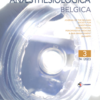Pharmacological strategies to reduce perioperative anxiety in children – a narrative review
Medication, preanesthetic, care, perioperative, children
Published online: Sep 20 2023
Abstract
Preoperative anxiety is common among children, resulting in negative postoperative behavior and increased postoperative pain. This review focuses on the practical use, safety, and efficacy of pharmacological strategies to reduce perioperative anxiety in children. The PubMed® database was searched using MeSH terms: ((care, preoperative) AND (children) AND (anti-anxiety drugs); (medication, preanesthetic) AND (child, preschool). An in-dept assessment was performed after which 85 articles were retrieved. Benzodiazepines (midazolam, diazepam), zolpidem, melatonin, opioids (fentanyl, butorphanol), alpha-2-adrenergic receptor agonists (clonidine, dexmedetomidine), ketamine and antihistamines (hydroxyzine, promethazine) were reviewed. Their pharmacological properties, routes of administration, doses, efficacy and (dis)advantages are discussed in this review. Based upon the results of our review, some suggestions can be made. Oral midazolam, oral clonidine, intranasally dexmedetomidine and the combination of oral ketamine and midazolam are recommendable products. Some other products like oral diazepam, butorphanol, ketamine intranasal s-ketamine + midazolam and hydroxyzine can be considered because of their proper safety profile and benefits.
Further research should focus on patient selection for specific pharmacological and non-pharmacological interventions to achieve a tailored approach. Standardized assessment of anxiety, clinical significancy and feasibility should be included in the objectives of these studies.
